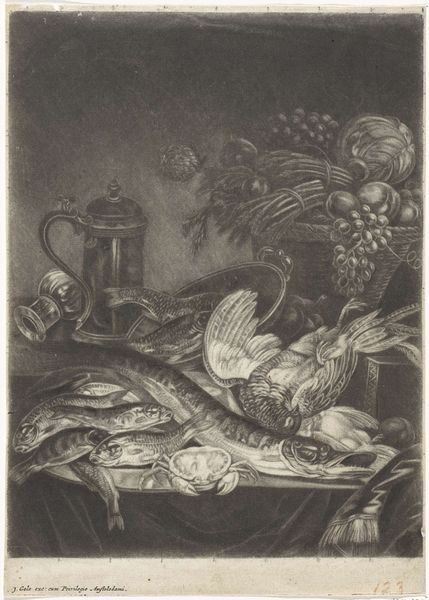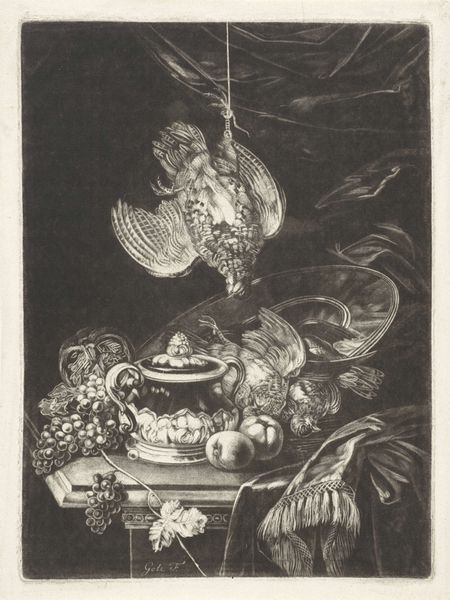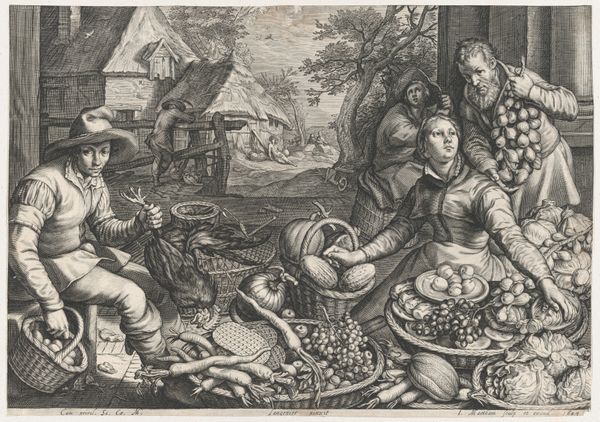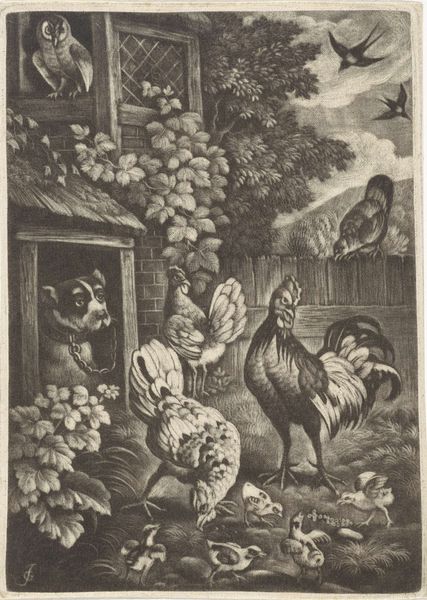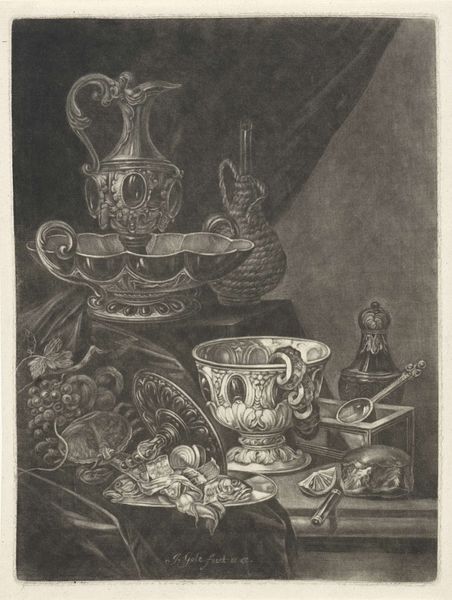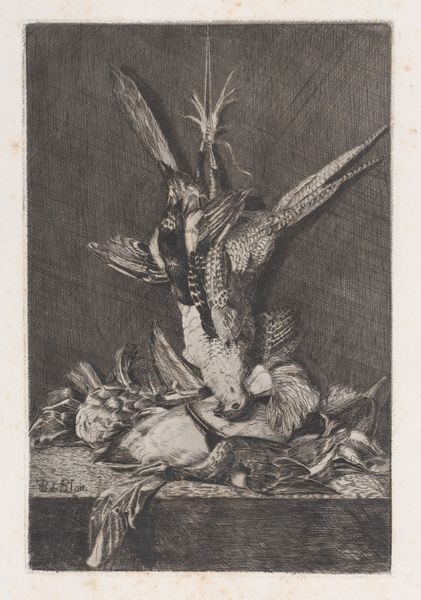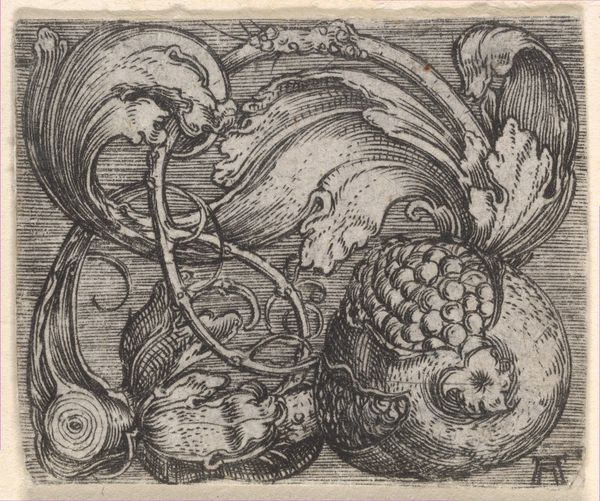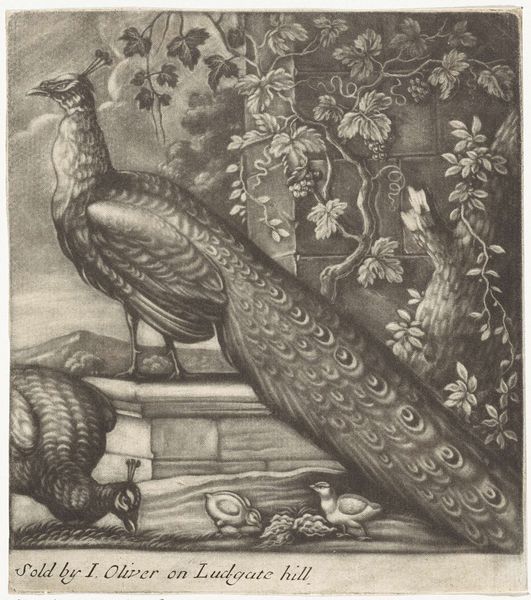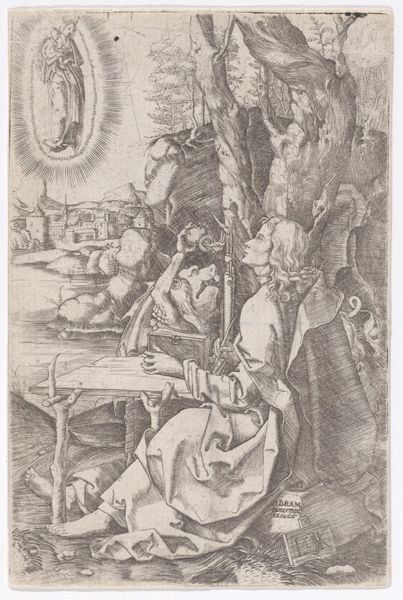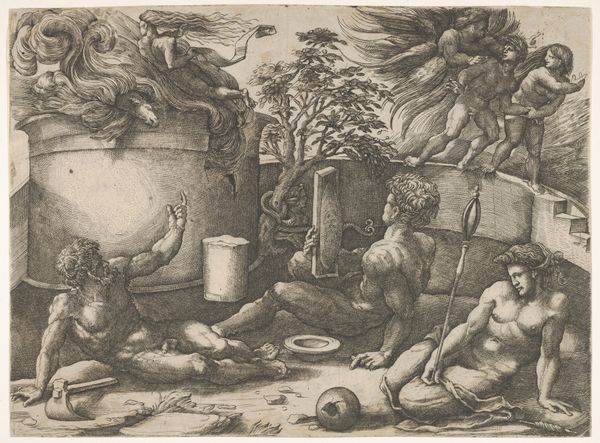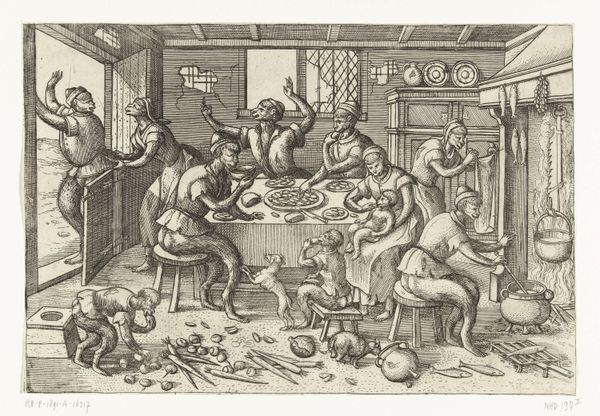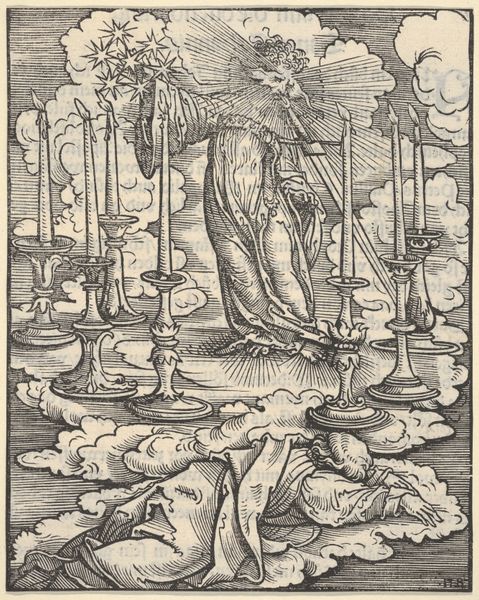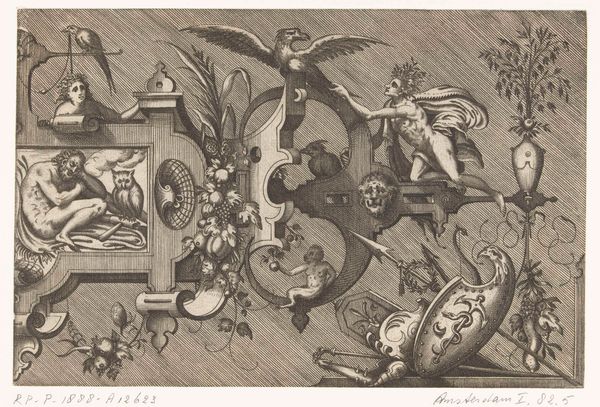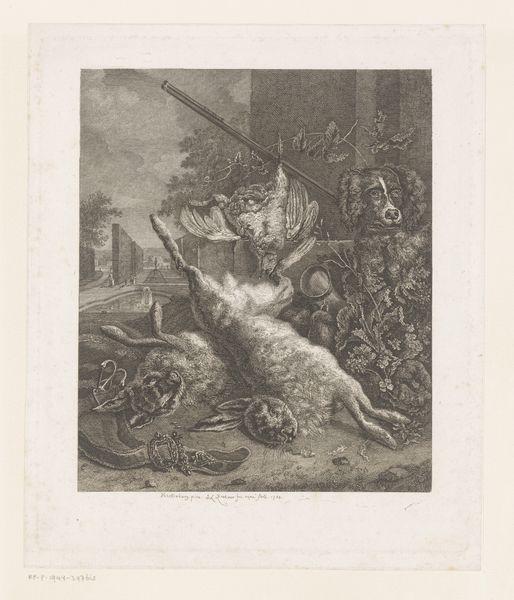
oil-paint
#
baroque
#
oil-paint
#
oil painting
#
genre-painting
Dimensions: overall: 229.2 x 163.2 cm (90 1/4 x 64 1/4 in.) framed: 257.8 x 192.4 x 10.1 cm (101 1/2 x 75 3/4 x 4 in.)
Copyright: National Gallery of Art: CC0 1.0
Editor: This is Anton Maria Vassallo’s "The Larder," painted sometime between 1650 and 1660. It's an oil painting positively brimming with dead animals, kitchenware, and... produce. It has an undeniably opulent feel. How do you interpret this collection? Curator: Considering the period and subject matter, "opulence" is definitely a key aspect. Think about what a larder *represented* back then: wealth, control over resources, status. But it's not just a neutral depiction, is it? Editor: Well, all those dead animals laid out so openly, especially the peacock, almost feels like… a boast? Curator: Exactly! It's a declaration, made visible. These weren't simply still lifes; they were displays for the wealthy elite, demonstrating their access to luxury foods. But also consider where this painting might have *hung* – likely in a grand dining hall, constantly reminding guests (and servants!) of their host’s power. Is that peacock merely decorative, or does it function as a symbol of power for the person that displayed it? Editor: I hadn’t thought of it that way – the placement influencing the message. So, it's about more than just aesthetics; it’s about the social and political statement the painting makes? Curator: Precisely. The baroque era had strict hierarchies, and art reinforced those boundaries. Ask yourself how museums themselves, displaying such works today, might perpetuate or challenge that historical power dynamic. Is there any democratization involved? Editor: So interesting to think about! It transforms what I initially saw as a pretty, albeit morbid, picture into something much more complex, with social power structures embedded into the layers of oil paint and social context that defined that particular setting. Curator: Exactly! These historical artworks acted as mirrors, showing us our cultural reflections throughout art history.
Comments
No comments
Be the first to comment and join the conversation on the ultimate creative platform.
